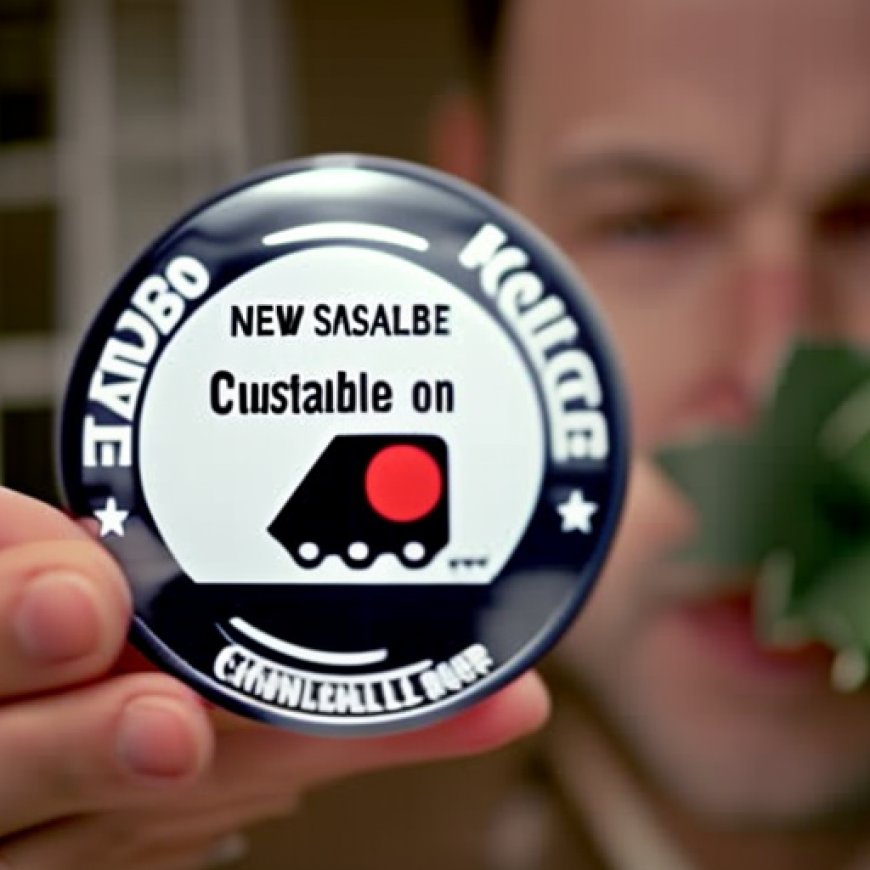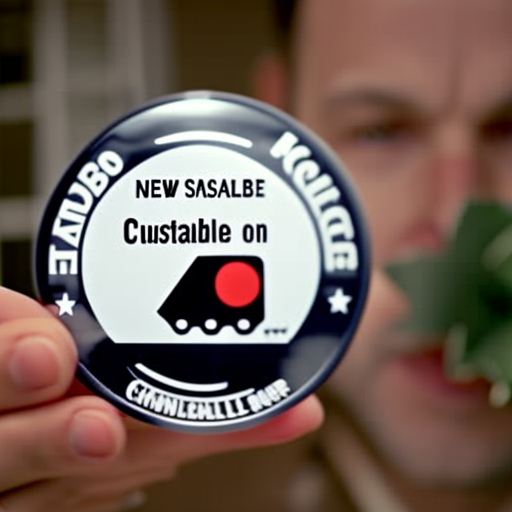Circular economy: New law on more sustainable, circular and safe batteries enters into force
Circular economy: New law on more sustainable, circular and safe ... EEAS


A New Law to Ensure Sustainable Battery Management in Europe
The Batteries Regulation has come into effect in Europe, aiming to promote the collection, reuse, and recycling of batteries. This regulation is designed to reduce the carbon footprint of batteries, minimize the use of harmful substances, decrease reliance on non-EU countries for raw materials, and enhance the circular economy. By implementing this law, Europe aims to achieve the Sustainable Development Goals (SDGs) by supporting the transition to a circular economy, ensuring a stable supply of raw materials and energy, and strengthening the EU’s strategic autonomy.
Embracing a Circular Approach to Battery Management
The Batteries Regulation aligns with the circularity goals of the European Green Deal. It is the first comprehensive legislation in Europe that addresses the entire life cycle of batteries, including sourcing, manufacturing, use, and recycling.
Promoting Sustainable Mobility and Climate Neutrality
Batteries play a crucial role in driving the green transition, supporting sustainable mobility, and contributing to climate neutrality by 2050. Starting from 2025, the Regulation will introduce declaration requirements, performance classes, and maximum limits on the carbon footprint of electric vehicles, light means of transport (such as e-bikes and scooters), and rechargeable industrial batteries.
Reducing Harmful Substances and Ensuring Responsible Sourcing
The Batteries Regulation mandates that batteries sold in the EU single market must contain only a limited amount of harmful substances deemed necessary. Substances of concern used in batteries will be regularly reviewed to ensure their safety and environmental impact.
Advancing Recycling Efficiency and Material Recovery
From 2025 onwards, the Batteries Regulation will gradually introduce targets for recycling efficiency, material recovery, and recycled content. All collected waste batteries must be recycled, with a focus on achieving high levels of recovery for critical raw materials like cobalt, lithium, and nickel. These measures aim to ensure the valuable materials are recovered at the end of their useful life and reintegrated into the economy.
Extending Product Lifespan and Encouraging Reuse
Starting in 2027, consumers will have the ability to remove and replace portable batteries in their electronic products at any stage of the product’s life cycle. This provision aims to extend the lifespan of products, promote reuse, and reduce post-consumer waste.
Empowering Consumers with Information
To assist consumers in making informed decisions, batteries will be labeled with key data. A QR code will provide access to a digital passport containing detailed information about each battery. This information will support consumers and professionals along the value chain in their efforts to embrace the circular economy for batteries.
Promoting Responsible Supply Chains
Under the Batteries Regulation, companies are obligated to identify, prevent, and address social and environmental risks associated with the sourcing, processing, and trading of raw materials like lithium, cobalt, nickel, and natural graphite used in batteries. This provision aims to prevent an increase in environmental and social risks resulting from the growing demand for batteries in the EU.
Next Steps
The focus will now shift towards implementing the law in the Member States and developing secondary legislation (implementing and delegated acts) that will provide more detailed rules.
Background
Since 2006, batteries and waste batteries have been regulated at the EU level under the Batteries Directive. In December 2020, the Commission proposed revising this Directive to adapt to new socioeconomic conditions, technological developments, markets, and battery uses.
The demand for batteries is rapidly increasing, projected to grow 14-fold globally by 2030, with the EU accounting for 17% of that demand. This growth is primarily driven by the electrification of transport. To minimize the environmental impact of this exponential demand for batteries, it is crucial to implement sustainable practices.
In 2017, the Commission launched the European Battery Alliance to establish an innovative, sustainable, and globally competitive battery value chain in Europe. The alliance aims to ensure a stable supply of batteries necessary for decarbonizing the transport and energy sectors.
More Information
SDGs, Targets, and Indicators
1. Sustainable Development Goals (SDGs) Addressed:
- SDG 7: Affordable and Clean Energy
- SDG 9: Industry, Innovation, and Infrastructure
- SDG 12: Responsible Consumption and Production
- SDG 13: Climate Action
- SDG 15: Life on Land
2. Specific Targets Identified:
- Target 7.2: Increase substantially the share of renewable energy in the global energy mix
- Target 9.4: Upgrade infrastructure and retrofit industries to make them sustainable
- Target 12.2: Achieve sustainable management and efficient use of natural resources
- Target 12.5: Substantially reduce waste generation through prevention, reduction, recycling, and reuse
- Target 13.3: Improve education, awareness-raising, and human and institutional capacity on climate change mitigation, adaptation, impact reduction, and early warning
- Target 15.2: Promote the implementation of sustainable management of all types of forests, halt deforestation, restore degraded forests, and increase afforestation and reforestation
3. Indicators:
- Indicator for Target 7.2: Renewable energy share in the total final energy consumption
- Indicator for Target 9.4: CO2 emissions per unit of value added
- Indicator for Target 12.2: Material footprint, material footprint per capita, and material footprint per GDP
- Indicator for Target 12.5: Waste generated per capita and proportion of waste recycled
- Indicator for Target 13.3: Number of countries that have communicated the strengthening of institutional, systemic, and individual capacity-building to implement adaptation, mitigation, and technology transfer
- Indicator for Target 15.2: Progress towards sustainable forest management
Table: SDGs, Targets, and Indicators
| SDGs | Targets | Indicators |
|---|---|---|
| SDG 7: Affordable and Clean Energy | Target 7.2: Increase substantially the share of renewable energy in the global energy mix | Renewable energy share in the total final energy consumption |
| SDG 9: Industry, Innovation, and Infrastructure | Target 9.4: Upgrade infrastructure and retrofit industries to make them sustainable | CO2 emissions per unit of value added |
| SDG 12: Responsible Consumption and Production | Target 12.2: Achieve sustainable management and efficient use of natural resources | Material footprint, material footprint per capita, and material footprint per GDP |
| SDG 12: Responsible Consumption and Production | Target 12.5: Substantially reduce waste generation through prevention, reduction, recycling, and reuse | Waste generated per capita and proportion of waste recycled |
| SDG 13: Climate Action | Target 13.3: Improve education, awareness-raising, and human and institutional capacity on climate change mitigation, adaptation, impact reduction, and early warning | Number of countries that have communicated the strengthening of institutional, systemic, and individual capacity-building to implement adaptation, mitigation, and technology transfer |
| SDG 15: Life on Land | Target 15.2: Promote the implementation of sustainable management of all types of forests, halt deforestation, restore degraded forests, and increase afforestation and reforestation | Progress towards sustainable forest management |
Analysis:
The issues highlighted in the article are connected to multiple Sustainable Development Goals (SDGs). The Batteries Regulation in Europe addresses the following SDGs:
1. SDG 7: Affordable and Clean Energy
The regulation aims to support the shift to a circular economy and increase security of supply for raw materials and energy.
2. SDG 9: Industry, Innovation, and Infrastructure
The regulation focuses on the sustainable management and efficient use of natural resources in the battery industry.
3. SDG 12: Responsible Consumption and Production
The regulation aims to achieve responsible consumption and production by reducing waste generation through recycling and reusing batteries.
4. SDG 13: Climate Action
The regulation contributes to climate action by promoting the use of batteries with a low carbon footprint and by improving education and awareness on climate change mitigation.
5. SDG 15: Life on Land
The regulation emphasizes the importance of sustainable forest management and aims to halt deforestation and restore degraded forests through the recycling of critical raw materials used in batteries.
Based on the article’s content, specific targets can be identified:
1. Target 7.2: Increase substantially the share of renewable energy in the global energy mix
The regulation aims to promote the use of batteries with a low carbon footprint, which will contribute to increasing the share of renewable energy in the global energy mix.
2. Target 9.4: Upgrade infrastructure and retrofit industries to make them sustainable
The regulation focuses on upgrading the battery industry to make it more sustainable by ensuring the efficient use of natural resources and reducing environmental impacts.
3. Target 12.2: Achieve sustainable management and efficient use of natural resources
The regulation aims to achieve sustainable management and efficient use of natural resources by implementing recycling and reusing practices for batteries.
4. Target 12.5: Substantially reduce waste generation through prevention, reduction, recycling, and reuse
The regulation aims to reduce waste generation by implementing recycling and reusing practices for batteries, ensuring that all collected waste batteries are recycled.
5. Target 13.3: Improve education, awareness-raising
Behold! This splendid article springs forth from the wellspring of knowledge, shaped by a wondrous proprietary AI technology that delved into a vast ocean of data, illuminating the path towards the Sustainable Development Goals. Remember that all rights are reserved by SDG Investors LLC, empowering us to champion progress together.
Source: eeas.europa.eu

Join us, as fellow seekers of change, on a transformative journey at https://sdgtalks.ai/welcome, where you can become a member and actively contribute to shaping a brighter future.







